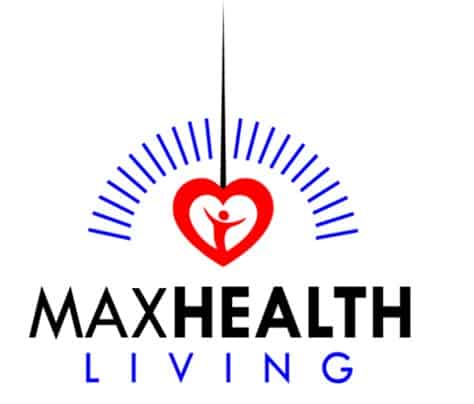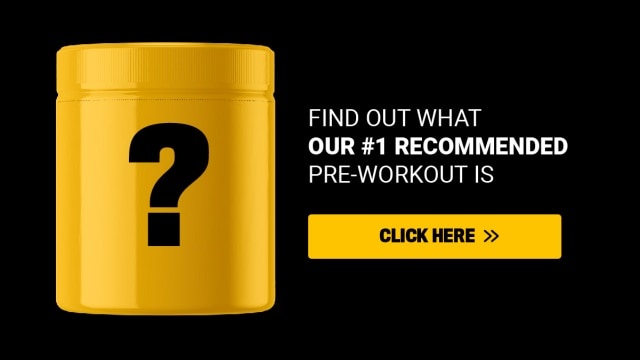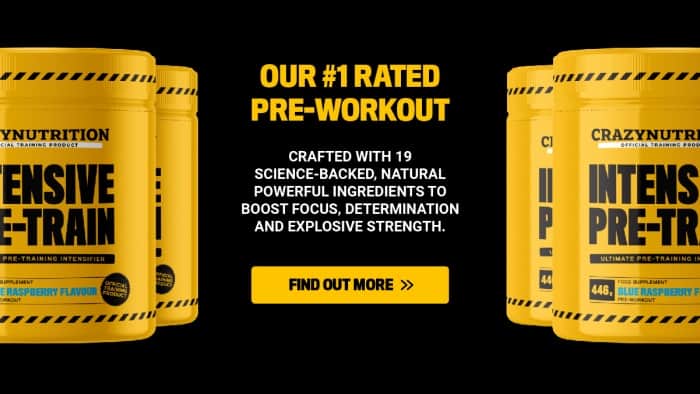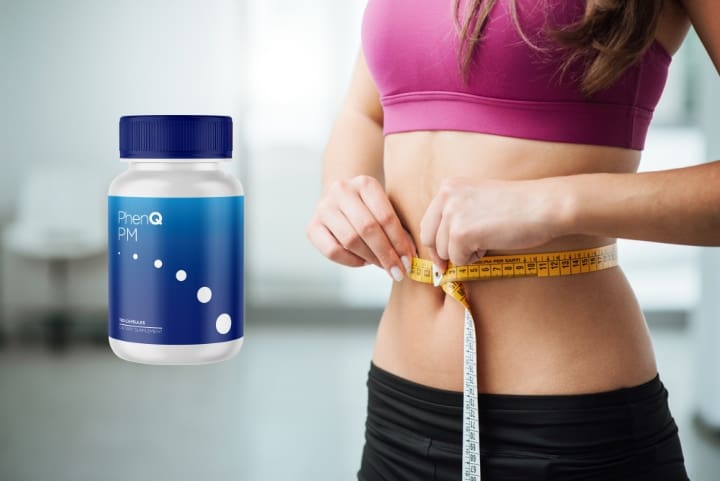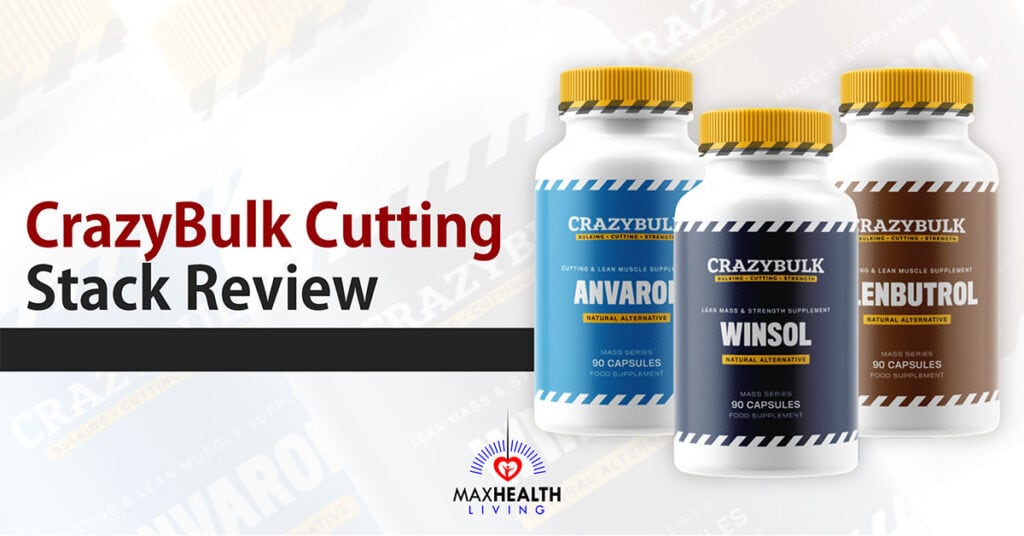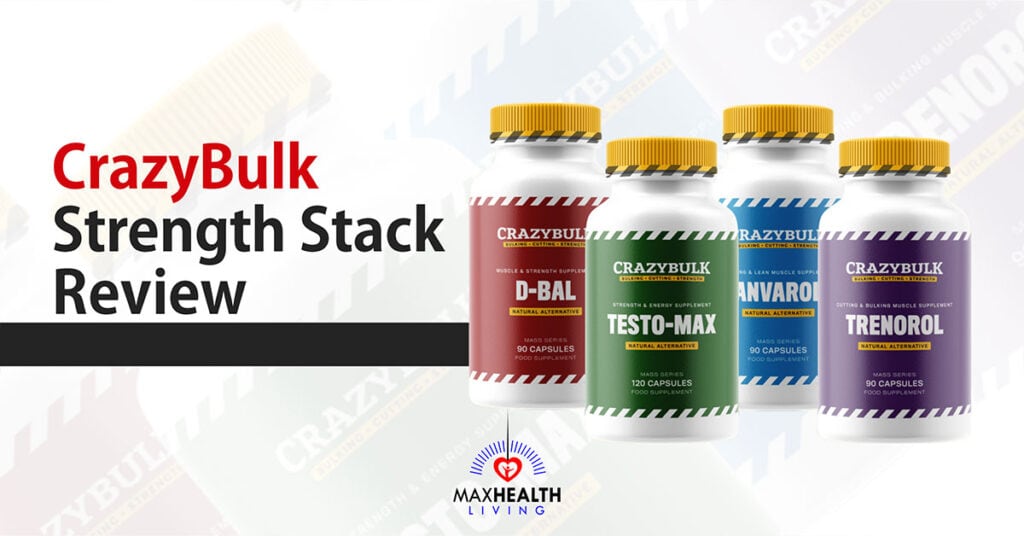51+ Pre-Workout Statistics & Facts (Market Size, Use, Effects)
Max Health Living is a reader-supported site. Purchases made through links may earn a commission. Learn more.
The Future Markets Insights report shows the increasing popularity of pre-workouts, which states that the pre-workout market is anticipated to exceed US$ 20,154 million in the global supplement industry in 2023. (source: Future Markets Insights)
However, many users lack accurate pre-workout information or have no information at all about them.
Therefore, today, we will look at the stats and facts about pre-workout and what they can tell us about its worldwide usage and projected market growth in the coming years. You’ll also get to see the infographic representation of these stats down below.
Moreover, you’ll learn how these facts impact your choices and what you can do to get the most out of pre-workout if you want to improve workout performance.
- Pre-workout market size: The pre-workout supplements market is predicted to become worth around 28.68 billion by 2028
- Regarding bodybuilder pre-workout stats, 6-7 out of 10 bodybuilders use a pre-workout supplement
- 54% of pre-workout users have reported side effects ranging from jitters to beta-alanine paraesthesia (tingling)
- 72% of surveyed people used pre-workout supplements at least semi-regular for 1+ years
- 75% of Americans take supplements – with pre-workout supplements among the most popular and widely used across demographics like age, sex, race, and others
- Skin reactions are the most common side-effect of pre-workout, having affected around 35% of users at least once
- 24% of people use pre-workouts four times a week, and 24.3% use them five times a week.
- 89% of people use pre-workout supplements for energy and wakefulness, even over their performance-enhancing benefits
- 37% of pre-workout users cited ‘a better pump’ as an important reason to use pre-workout supplements
- 86% of pre-workouts include caffeine
- 49% of pre-workouts contain creatine
- Among pre-workout users, ingredients are the most important deciding factor (according to 67% of surveyed users).
How Many People Use Pre-workout?
Approximately 72.2% of surveyed individuals have been using pre-workout for over a year, with 24.1% to 24.3% consuming it four to five days weekly. In the USA, representing 24.1% of the global market, pre-workout supplements are widely consumed, with 75% of Americans using supplements, including 72% of Division 1 NCAA athletes, integrating them into their training and competitive routines.
Here are more stats on pre-workout usage:
- Females are less likely to take two or more doses of pre-workout. Still, pre-workout side effects are more prevalent in them.
- The number of men who take two pre-workout servings is twice that of women.
- Starting with the question, how many people take pre-workout? A survey was performed to analyze the frequency of pre-workout consumption, which revealed that 72.2% of respondents had been taking them for more than one year.
- They primarily took it four (24.1%) to five (24.3%) days per week. This marks a significant number of people taking stimulant-loaded supplements regularly and often alongside other sources of caffeine.
- The USA has one of the biggest pre-workout consumers, holding 24.1% shares of the global pre-workout supplements market in 2022.
- 75% of Americans take supplements – with pre-workout supplements among the most popular and widely used across demographics like age, sex, race, and others. Pre-workouts are simply the most direct
- 72% of Division 1 NCAA athletes also report using pre-workout supplements, often in use with both training and competitive performances. These are popular for the varied demands of most sports and the weight room strength and conditioning of most sports.
Why Use a Pre-workout: Facts about Effects
- Among the many pre-workout supplement facts, one is that, in a group of respondents, 80.3% of users choose a pre-workout based on its caffeine content. Additionally, 57.9% choose it for beta-alanine, 46.1% for creatine, 43.6% for the vasodilator, 7.1% for vitamins, 5.7% for banned substances, 3.4% for banned anabolic agents and 3.4% for branched-chain amino acids.
- In a survey of pre-workout supplement users, 33.3% percent believed that they moderately increase their strength, while 30% percent found its benefit for moderately increasing their speed.
- 80% of users believe that their pre-workout use improves their workouts – either definitely (around 55%) or probably (around 30%). This is backed up by the scientific literature, where pre-workout supplements are typically effective at improving performance and subjective satisfaction with workouts.
- A huge 89% – use pre-workout supplements for energy and wakefulness, even over their performance-enhancing benefits. This shows that the psychological side of pre-workouts is the most important factor in their use.
- 37% of users proactively aimed at muscular endurance, one of the most universal benefits for bodybuilders and endurance athletes alike. This is a strong contender for the increased numbers of sportspeople using pre-workout supplements
- 37% of pre-workout users cited ‘a better pump’ as an important reason to use pre-workout supplements. This is a classic bodybuilding hold-over and shows that there’s still a huge chunk of the population who want to pump iron first and foremost
- As many as 14% of users admitted to taking pre-workout supplements twice a day for various reasons – as an independent caffeine source or ‘top up,’ for example. This is a less healthy and more concerning trend, especially when secondary doses aren’t associated with workouts.
Pre-workout Supplements Market Statistics
- The global pre-workout supplements market size is expected to grow at a CAGR of 8.21% and by USD 8,223.64 million from 2022 to 2027. Moreover, North America is estimated to account for 32% of this annual growth.
- In 2022, all pre-workout sales accounted for 20% of the total sales in the global supplement industry.
- The pre-workout supplement market is anticipated to grow by 28.68 billion by 2028. This makes it one of the largest supplement markets – behind protein powders.
- Most supplements are purchased online with consistent yearly growth of around 10%, which has reduced brick-and-mortar supplement stores. This is a constant sign of increased online sales.
- North America has the highest demand and usage, covering up to 40% of the world’s pre-workout supplement demand. This is in line with the physical cultures around bodybuilding that are most popular in the United States and Canada.
Facts About Pre-workout Side Effects:
- 54% of pre-workout users have reported side effects of pre-workout. These include jitters to beta-alanine paraesthesia (tingling). These are common, but most reported side effects are non-dangerous, like jitters and others.
- Over 1/3 of users (35-38%) reported not listening to intended serving sizes regularly. This is a common factor in the user profiles, where serving sizes above intended are typically not immediately dangerous and provide more of the psychological effects noted above.
- Around 10% of those surveyed suggest that they don’t consider pre-workout supplements to be safe. These are typically those who don’t use pre-workout, but some users indicated that they use irregularly due to safety concerns.
- Skin reactions are the most common side-effect of pre-workout, having affected around 35% of users at least once. This is most common with compounds like beta-alanine due to the paraesthesia (tingling) that it can induce in the skin as capillaries dilate.
- Nausea has been associated with pre-workout use at least once in around 25% of users – or 1 in 4 – which could be due to dose, hydration status, or other interactions. These are common problems in many forms of supplementation and benefit from habitual eating and supplementation habits with less variety and more predictable foods/interactions.
- Heart abnormalities are semi-common, occurring as a major side effect at least once in the use of 25% of surveyed pre-workout users – typically as abnormal heart rate. These are most often related to the changing electrolyte mechanics of the heart and increased caffeine (and other stimulants) intake.
- Lightheadedness is another pre-workout side effect, occurring at some point in around 19% of users. This has many possible causes but is at least somewhat inherent in the intense exercise that pre-workout facilitates.
- Dizziness follows lightheadedness, experienced by around 15% of pre-workout supplement users. Again, this could be due to a dietary issue, intolerance of a supplement ingredient, or just the inevitable outcome of the very intense exercise.
Pre-Workout Ingredient Statistics: What’s inside?
- 87% of sales include beta-alanine – the most important muscle endurance ingredient, matching the number of users who cited this as their main priority with pre-workout supplements
- 86% of pre-workouts include caffeine – with a growing sector for caffeine-free pre-workout supplements. This is the singularly most important and characteristic ingredient for pre-workouts, while 14% of caffeine-free supplements include deliberately “non-stimulant” formulations
- The caffeine content in a pre-workout supplement has a wide range of 266% among popular retail pre-workout supplements (excluding caffeine-free alternatives). The upper ends of this scale can easily surpass the FDA’s recommended 450mg use per day, with only mild changes to the dose.
- 71% use citrulline – a superior form of arginine and nitric oxide booster, which improves both muscular endurance and the quality of muscle pumps. This is derived from watermelon and has seen increasing popularity in recent years.
- 63% utilize tyrosine as an anti-fatigue and mental support compound. This is a relatively mild compound by itself but is often combined with other forms of mental performance support to maintain better anti-fatigue protection.
- 51% use taurine for osmolytic, cardiovascular, and muscular benefits. This may be due to the widespread availability of taurine and the economy of manufacturing it – one of the cheaper and less risky ingredients for the average person.
- 49% – nearly half of all pre-workouts – use creatine in some form. Creatine is mostly useful for short-term water and carbohydrate loading into the muscles as a pre-workout but has benefits to muscular strength and endurance when used at any time of day.
- Among pre-workout users, ingredients are the most important deciding factor (according to 67% of surveyed users). This should be higher since the ingredient choices will determine what a supplement does too – and for – your health and performance.
- The main brands cited among surveyed users include Cellucor (the makes of C4), GNC, Optimum Nutrition, Jym, and ProSupps. These reflect both the online market and the brick-and-mortar holdouts like GNC.
- 20% of pre-workout supplement users from Germany admitted that DMAA – a controlled substance in the United States – was among their preferred ingredients, raising questions about the use of stimulants in pre-workout supplements and their safety.
Pre-Workout Stats FAQs
How long does it take for pre-workout to wear off?
The effect of pre-workouts may peak between 1 to 2.5 hours, depending on the ingredients and you may feel the energy rush and alertness at least 3.5 to 4 hours after ingestion of caffeine-containing.
Which is the best pre-workout in the market?
There is a diverse list of effective pre-workouts that you can choose from; some of these are;
Crazy Nutrition Preworkout, 4 gauge preworkout, Naked Energy Preworkout, Legion Pulse Preworkout, and Pre-Kaged.
Do bodybuilders use pre-workout?
Yes, bodybuilders use pre-workouts to enhance endurance, pump muscles, boost energy, and focus for strenuous workouts. These benefits are contributed by pre-workout ingredients such as L-carnitine, betaine, B vitamins, and caffeine.
Does pre-workout improve performance?
Yes, pre-workouts delay the time to fatigue, promote muscle recovery, improve muscle strength, and enhance cognition, all of which will help you perform better.
How long before a workout should you take pre-workout?
You should take a pre-workout very close to your workout – a maximum of 30 minutes out. Depending on your exercise order and the amount of warm-up time, you can start using your pre-workout as you enter the gym. However, be careful not to leave out prepared powders for long because they are hygroscopic, and due to excessive moisture absorption, the pre-workout becomes solid and clumps up.
Proper loading of things like caffeine doesn’t take long – and a carb-rich pre-workout drink can improve performance almost immediately as you sense carbs in the mouth.
You should sip at a pre-workout drink for the start of your workout, letting the benefits add up as you go.
Is Pre-Workout Safe? Is It Safe For Women?
Yes, the vast majority of pre-workout supplements are safe – though it does depend on the product.
The main ingredients are caffeine, vitamins, minerals, and performance-enhancing compounds that are mostly associated with positive health outcomes – like improved performance, cardiovascular function, and recovery.
Pre-workout is safe for women. As with any pre-workout, it’s about getting the right product.
Any low-quality product that has an excessive stimulant content or uses questionable ingredients (like ephedrine) can cause problems, but most of them are effective while being generally safe.
How Effective Is Pre-Workout?
While it depends on the specific product, most pre-workout supplements are effective.
They’re typically rich in caffeine (very effective for mental and physical performance) as well as performance boosters like citrulline, beta-alanine, and others can improve performance acutely.
Some products are more effective than others, and the best is defined by ingredient synergies that produce better results together than apart.
This kind of product performs better per serving because it offers more effective ingredients per serving.
Do Most Athletes Use Pre-Workout?
Yes, most athletes typically have a pre-workout or pre-training routine for eating and supplement use.
This doesn’t look like the bodybuilder approach to pre-workout nutrition and has more scheduled and planned meals than simply a single pre-workout supplement.
Elite athletes take any option they can to improve the performance and effectiveness of training, which means that even the small advantages conferred by a pre-workout are obvious choices.
Is There Scientific Research On Pre-Workout?
Yes – there is a wide variety of pre-workout research articles showing their effectiveness.
They are also made up of individual ingredients that have effective scientific research – like creatine, beta-alanine, and (of course) caffeine.
These are individually useful but also work well in smart combinations – which is how different products distinguish themselves from the others on the market.
Individual products don’t often have scientific research on their specific benefits.
But the actual scientific background is rock solid for conventional pre-workout supplements.
How many Americans take pre-workout?
72% of a surveyed cohort of Americans reported using pre-workout at least semi-regularly over the previous year.
This means that slightly fewer than this – maybe 6 or 7 people out of 10 – use pre-workout at least yearly.
This means that roughly 165 million Americans will use pre-workout supplements at least once in a given calendar year.
This accounts for the use of pre-workouts in adults (excluding youth athletes and other children) and explains why there’s so much money in the pre-workout market!
What percent of gym-goers take pre-workout?
An interesting pre-workout fact about gym-goers is that, on average, their regular and semi-regular pre-workout use is around 72-90%.
This means that most gym users regularly use pre-workout, and among those gym-goers, the average use is somewhere in the months of regular use.
Pre-workout supplements are notably more popular among athletes and men, in particular, where estimates range from 70 to 90% depending on the study and group study.
These reinforce the fact that men like to use stimulants before workouts – whatever the source.
Rates then drop off once again in older people, where the use of stimulants is typically less popular for both the perceived risk and the change in how older people exercise.
Infographic on Pre-Workout Statistics

Final Takeaways
Pre-workout makes up an important and beneficial segment of the supplement market.
It’s not a necessity, but it’s a popular way of improving a wide range of workout results and improving performance – especially after long, busy, tiring days of work – or before a morning workout, and this is proven by pre-workout supplement statistics as well.
Using nutrition to support workouts is a simple but powerful strategy. The proper effort will produce more results, and being smart about your supplement selection and ingredient choices will be the difference between good and bad experiences with pre-workout!”
Get a good product, use it responsibly, and ensure that the rest of your diet supports performance, too.
Don’t use a pre-workout as a crutch, and try to align your whole diet, training, sleep, and lifestyle habits to a total package – where the best results come easier.
If you are a new buyer, I would recommend you start by investing in Crazy Nutrition’s most popular pre-workout as our testers approve it for safety and efficacy.
Other Sources:
- https://www.futuremarketinsights.com/reports/pre-workout-supplements-market
- https://www.ncbi.nlm.nih.gov/pmc/articles/PMC6520716/
- https://www.yahoo.com/entertainment/dwayne-rock-johnson-releases-game-152035090.html
- Primarily from Common Habits, Adverse Events, and Opinions Regarding Pre-Workout Supplement Use Among Regular Consumers – PMC (nih.gov)
Dreher M., Ehlert T., Simon P., Neuberger E.W.I. Boost Me: Prevalence and Reasons for the Use of Stimulant Containing Pre Workout Supplements Among Fitness Studio Visitors in Mainz (Germany) Front. Psychol. 2018;9 DOI: 10.3389/fpsyg.2018.01134. [PMC free article] [PubMed] [CrossRef] [Google Scholar] [Ref list]
Important Disclaimer: The information contained on MAX HEALTH LIVING is intended for informational and educational purposes only. Any statements made on this website have not been evaluated by the FDA and any information or products discussed are not intended to diagnose, cure, treat, or prevent any disease or illness. Please consult a healthcare practitioner before making changes to your diet or taking supplements that may interfere with medications.
Who We Are

We are a team of fitness, health, and supplement experts, and content creators. Over the past 4 years, we have spent over 123,000 hours researching food supplements, meal shakes, weight loss, and healthy living. Our aim is to educate people about their effects, benefits, and how to achieve a maximum healthy lifestyle. Read more.
